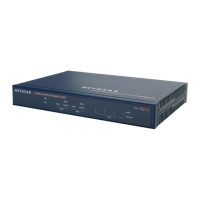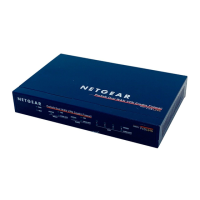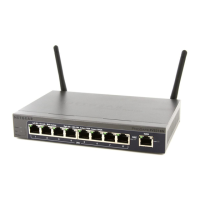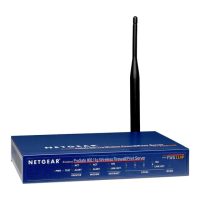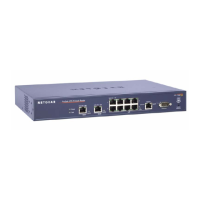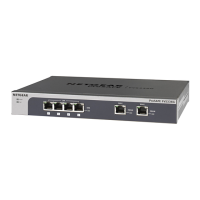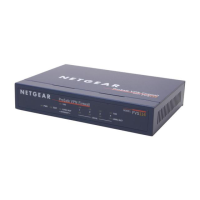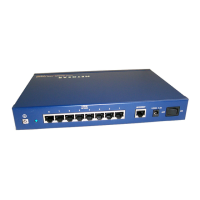Manually Configuring Internet and WAN Settings
70
ProSecure Unified Threat Management (UTM) Appliance
Note: If the configuration process was successful, you are connected to
the Internet through the WAN that you just configured. For the
multiple WAN port models, continue with the configuration process
for the other WAN interfaces.
Note: For more information about the WAN Connection Status screen, see
View the WAN Ports Status on page 474.
5. For the multiple WAN port models, repeat Step 2, Step 3, and Step 4 for any other WAN
interface that you want to configure.
If the automatic WAN ISP configuration is successful, you can skip ahead to Configure the
WAN Mode on page 74.
If the automatic WAN ISP configuration fails, you can attempt a manual configuration as
described in Manually Configure the Internet Connection on this page, or see Troubleshoot
the ISP Connection on page 511.
Set the UTM’s MAC Address
Each computer or router on your network has a unique 48-bit local Ethernet address. This is
also referred to as the computer’s Media Access Control (MAC) address. The default is set to
Use Default Address on the WAN Advanced Options screens. If your ISP requires MAC
authentication and another MAC address has been previously registered with your ISP, then
you need to enter that address on the WAN Advanced Options screen for the corresponding
WAN interface (see Configure Advanced WAN Options on page 89).
Manually Configure the Internet Connection
Unless your ISP automatically assigns your configuration through DHCP, you need to obtain
configuration parameters from your ISP to manually establish an Internet connection. The
necessary parameters for various connection types are listed in Table 13 on page 69.
To manually configure the WAN ISP settings for an interface:
1. Select Network Config > WAN Settings. The WAN screen displays (see Figure 36 on
page 67, which shows the UTM50).
2. Click the Edit button in the Action column of the WAN interface for which you want to
configure the connection to the Internet. The WAN ISP Settings screen displays (see
Figure 37 on page 68, which shows the WAN1 ISP Settings screen as an example).
3. Locate the ISP Login section onscreen:
